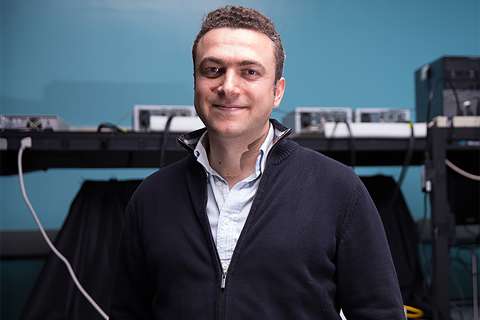The Journal of Nuclear Medicine editors recently honored a UCLA study, citing it as one of the most outstanding contributions to their journal in 2018.
The research paper titled, “68Ga-PSMA-11 PET/CT mapping of prostate cancer biochemical recurrence after radical prostatectomy in 270 patients with a PSA level of less than 1.0 ng/mL: Impact on salvage radiotherapy” won the editor’s choice award for the Best Clinical Article and the Overall Best Article in 2018. The journal published the study in February 2018, and it has been cited 66 times by other studies.
The award-winning study was a joint partnership between the Ahmanson Translational Nuclear Medicine and Theranostics Division and the Department of Radiation Oncology at UCLA. Drs. Jeremie Calais, who served as the first author, and Nicholas Nickols, who served as the last author, are both members of the UCLA Jonsson Comprehensive Cancer Center.
The research included an analysis of 270 patients from four institutions, including Technical University of Munich, Ludwig Maximilian University of Munich, University of Essen and UCLA. These patients had their prostate surgically removed after being diagnosed with cancer. As a standard of post-surgical care, the patients were diagnosed with early recurrence of prostate cancer by a screening blood test. For the study, they underwent a new imaging technique called prostate-specific membrane antigen imaging, or PSMA PET/CT, to find the location of the cancer cells.
The results showed that this imaging test could pinpoint the location of the cancer cells in half of the patients. The key finding was that the imaging test detected cancer locations that would not have been covered by the standard radiation therapy fields in 19 percent of the patients. The results set the groundwork for additional studies that can help determine how doctors can best use this new imaging technique to locate a recurrence of prostate cancer at an early stage when it is more treatable.
The Journal of Nuclear Medicine is a peer-reviewed publication that is published monthly by the Society of Nuclear Medicine and Molecular Imaging.
The other researchers honored for this paper include Johannes Czernin, Minsong Cao, Amar Kishan, John Hegde, Narek Shaverdian, Kiri Sandler, Fang-I Chu, Chris King, Michael Steinberg, Isabel Rauscher, Nina-Sophie Schmidt-Hegemann, Thorsten Poeppel, Philipp Hetkamp, Francesco Ceci, Ken Herrmann, Wolfgang Fendler and Matthias Eiber.



